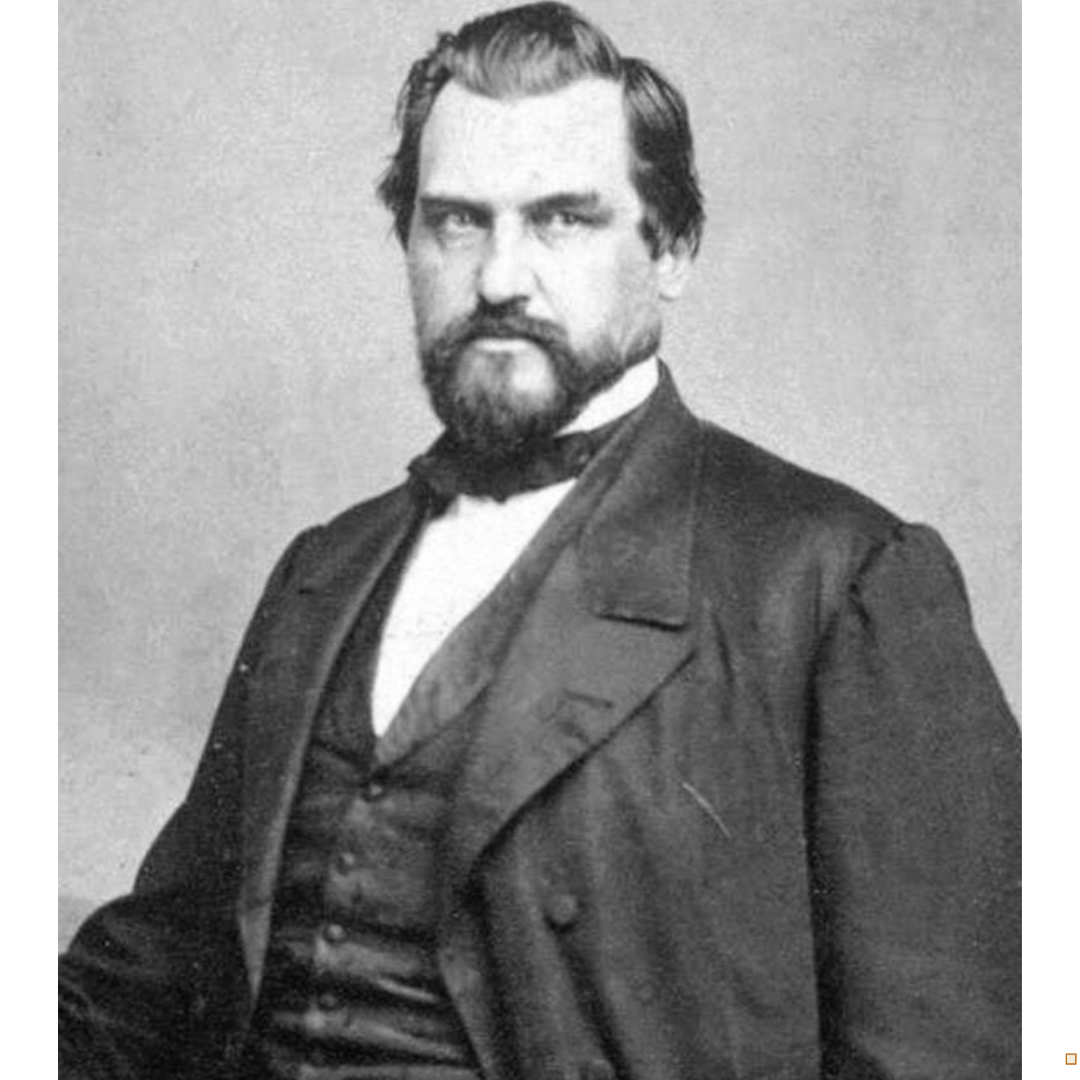
Leland Stanford: Railroad Tycoon, Politician, and Builder of the American Frontier
The transformation of the American frontier into a connected, industrialized, and thriving nation was not achieved solely through grit and courage—it also required vision, leadership, and capital. One of the most influential figures to bridge the divide between the untamed West and the bustling East was Leland Stanford, a man whose name became synonymous with ambition and expansion. As a railroad tycoon, political leader, and philanthropist, Stanford helped lay the literal and figurative tracks for America’s westward journey, shaping the frontier in ways still felt today.
Humble Beginnings
Amasa Leland Stanford was born on March 9, 1824, in Watervliet, New York (now part of Colonie), into a family of moderate means. His father, Josiah Stanford, was a farmer and businessman, and young Leland grew up in a household where enterprise and hard work were part of daily life. He studied at local academies and briefly attended Cazenovia Seminary, but his early education was more practical than prestigious.
In 1848, Leland began studying law and was admitted to the bar in 1849. However, just as he was starting his career, the California Gold Rush exploded onto the scene. Drawn by the promise of opportunity—much like countless other Americans—Stanford moved west in 1852, joining his brothers in Sacramento, California.
From Merchant to Railroad Magnate
Stanford initially made his fortune as a merchant, supplying goods to gold miners and settlers. But it was his role in one of the most ambitious infrastructure projects in American history that secured his legacy: the transcontinental railroad.
In 1861, Stanford joined forces with three other Sacramento businessmen—Collis P. Huntington, Charles Crocker, and Mark Hopkins—to form the Central Pacific Railroad Company. These men, later known as the “Big Four,” secured federal support through the Pacific Railway Act of 1862, which provided land grants and loans to railroad companies building lines to unite the East and West.
Stanford served as president of the Central Pacific, and his business acumen, combined with strong political connections, helped propel the railroad forward. Despite enormous logistical challenges—including building through the Sierra Nevada mountains—the Central Pacific pressed eastward while the Union Pacific moved westward from Omaha, Nebraska.
The golden spike that marked the completion of the first transcontinental railroad was driven at Promontory Summit, Utah, on May 10, 1869. Leland Stanford himself had the honor of driving that final ceremonial spike—a symbolic act that connected a divided continent and ushered in a new era of frontier expansion, commerce, and migration.
Political Career and Influence
Leland Stanford was not only a businessman—he was also a political force in California. A member of the Republican Party, he was elected Governor of California in 1861. His tenure, during the early years of the Civil War, was marked by support for the Union and the advancement of infrastructure and public works.
Later, in 1885, Stanford was elected to the U.S. Senate, where he served until his death in 1893. As a senator, he continued to advocate for the development of transportation networks and land use policies that favored the growth of the western states.
Stanford used his political clout to ensure favorable legislation for railroads and other infrastructure projects. While his influence drew criticism for conflicts of interest and monopolistic practices, it also undeniably helped shape the American West into a connected, economically vibrant region.
A Tragic Loss and a Legacy of Learning
Though Leland Stanford achieved monumental success in business and politics, his personal life was marked by tragedy. He married Jane Lathrop Stanford in 1850, and in 1868, the couple welcomed their only child, Leland Stanford Jr. The boy was intelligent and well-traveled, and his parents had high hopes for his future. Sadly, during a family trip to Europe, Leland Jr. fell ill and died of typhoid fever at the age of 15 in 1884.
Devastated by the loss, the Stanfords resolved to create something lasting in their son’s memory. In 1885, they founded Stanford University in Palo Alto, California—a school dedicated to fostering learning, innovation, and opportunity. The university opened in 1891 and quickly became one of the most respected institutions of higher education in the United States. Today, Stanford University stands as one of the most prestigious academic institutions in the world—a powerful symbol of the Stanford family's enduring legacy.
Death and Reflection
Leland Stanford died on June 21, 1893, at the age of 69, in Palo Alto. By the time of his death, he was one of the wealthiest and most influential men in America. His contributions to infrastructure, politics, and education earned him both admiration and scrutiny—but there is no doubt that his vision helped forge the modern American West.
The railroads he helped build brought settlers, goods, and ideas to the frontier, connecting communities that had once been isolated. His university educated generations of thinkers and leaders. And his name, quite literally, became a cornerstone of California history.
A Cup to Honor a Tycoon’s Spirit
At Frontier Coffee Roasters, we pay tribute to frontier legends like Leland Stanford with our signature blend: Tycoon’s Reserve. This small-batch, expertly roasted coffee celebrates the visionaries who shaped the American West—not just with muscle and grit, but with strategy, courage, and the will to build.
Crafted from Blue Mountain Jamaican coffee, Tycoon’s Reserve delivers a bold, refined flavor profile worthy of the railroad barons and pioneers who connected a continent. It's the perfect cup for those who appreciate legacy, innovation, and the timeless spirit of enterprise.
You can also explore more about this exceptional coffee on our Blue Mountain Jamaican Coffee Hub—a space dedicated to the origins, flavor, and craftsmanship behind this renowned variety.
Leland Stanford didn’t just build railroads—he helped build the framework of modern America. And with every sip of Tycoon’s Reserve, we’re reminded that bold ideas, well executed, leave tracks that last for generations.

